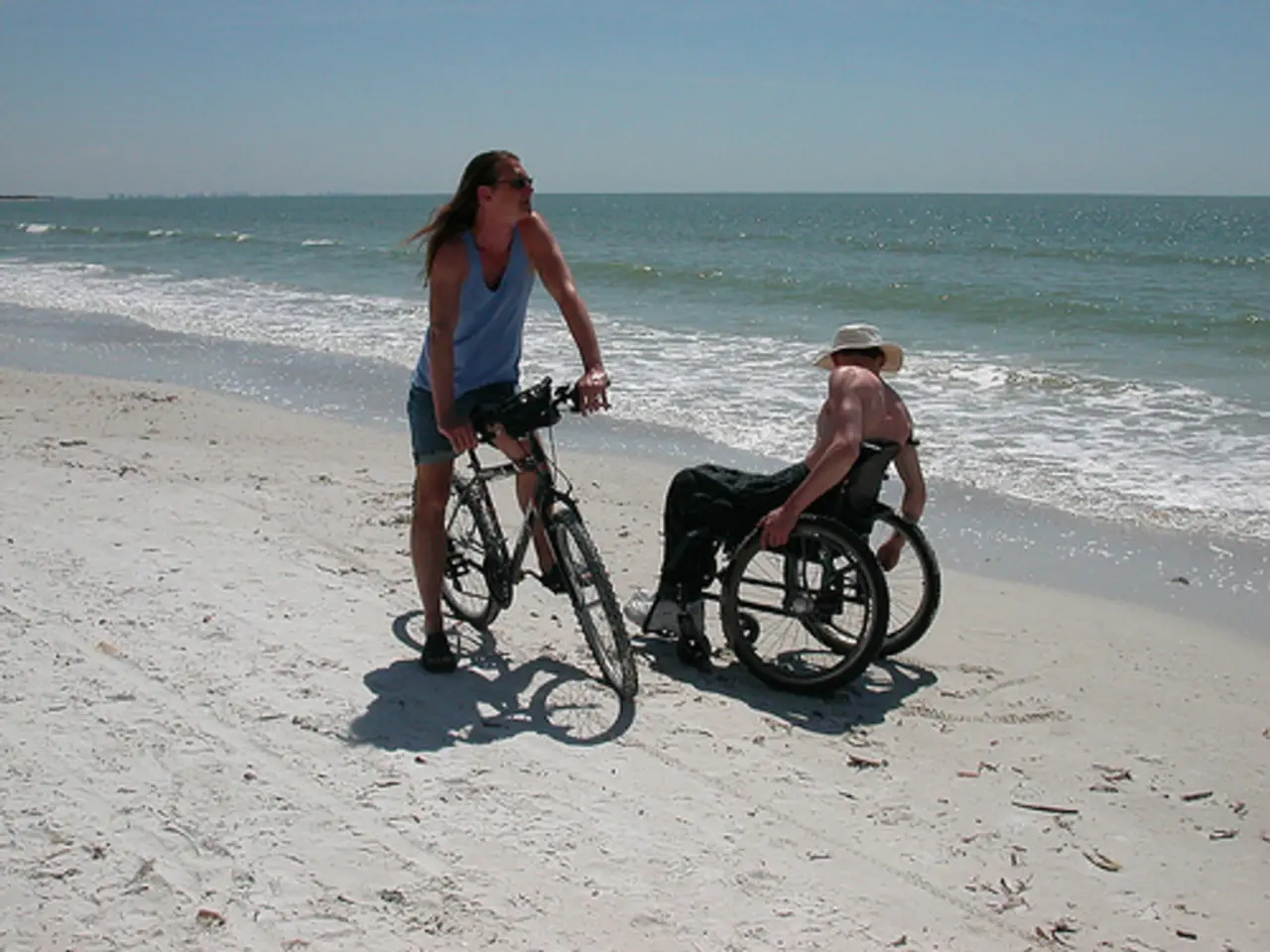Exploring New Territories in Limb Replacement: The Emergence of Unconventional Prosthetics
The disability rights movement of the 20th century paved the way for a shift in perception towards disability, advocating for greater inclusion and acceptance. This movement has extended its reach into the 21st century, particularly in the field of prosthetics. Today, alternative prosthetics are transforming the landscape, challenging traditional design conventions and redefining what it means to live with a prosthetic limb.
Innovative and Personalized Designs
The future of prosthetics is expected to see more innovative and personalized designs as technology advances and inclusivity gains momentum. Modern transfemoral (above-knee) prostheses now incorporate sensors that monitor knee movements and ground forces, relaying data to microprocessors to regulate hydraulic systems. This enables dynamic adaptation to individual walking rhythms, improving natural gait and mobility, such as stair navigation [1].
Bionic upper limb prosthetics are also making strides, with devices controlled by electromyographic (EMG) signals detected from remaining muscle tissue. This allows for more precise and natural motor functions like finger movements, wrist rotation, and grip strength [1]. Advanced devices utilize multiple motors and AI-based control units to replicate delicate, multi-directional movements, moving beyond simpler cable-driven models that rely purely on body motion.
Affordability and Accessibility
One of the biggest challenges facing the alternative prosthetics movement is accessibility and affordability. Prosthetic limbs, especially those with advanced technology and customization options, can come with exorbitant price tags, often placing them out of reach for many individuals. Startups like South Korea's Mandro are creating low-cost robotic limbs that maintain high functionality but drastically reduce prices—up to ten times less expensive than traditional prosthetics [3]. This democratization of prosthetic technology counters the historical trend of prohibitively costly devices, expanding access globally.
Data-Driven and AI-Enhanced Prosthetics
Emerging research utilizes large datasets and AI models to analyze gait patterns, enhancing prosthesis design, fit, and control. Future developments aim to create interactive, adaptive prosthetics powered by microcomputers and informed by continuous data feedback, improving stability, comfort, and user experience in real time [4].
The Cultural Shift
Prosthetics are being redefined in the 21st century to serve as tools for self-expression, empowerment, and artistic exploration. Designers like Dani Clode, Viktoria Modesta, and Nicholas Harrier are driving innovation and inclusivity in the alternative prosthetics movement by creating functional, aesthetically striking, and personalized prosthetic designs [5]. Examples of alternative prosthetic designs include third thumbs, running blades, artistic prosthetics, and custom covers.
Moving Forward
To ensure that everyone who can benefit from prosthetics has the opportunity to do so, it's crucial to prioritize affordability and accessibility. This requires medical device reform, expanded insurance coverage, and financial assistance programs. Improving access to alternative prosthetics also necessitates tackling the issue of limited insurance coverage, which further exacerbates the issue of accessibility [6].
The alternative prosthetics movement embraces diversity and celebrates individuality, fostering a culture where prosthetics are seen as opportunities for self-expression, empowerment, and creative exploration. The desire to augment and enhance the human body is not new, with evidence of prosthetic limbs dating back thousands of years in ancient civilizations like Egypt and Rome [7]. Today, this desire is being met with groundbreaking innovations that are revolutionizing the world of prosthetics.
[1] "Bionic Limbs: The Future of Prosthetics." BBC Future, BBC, 4 Feb. 2020, www.bbc.com/future/article/20200204-bionic-limbs-the-future-of-prosthetics
[2] "3D Printed Prosthetics: The Future of Prosthetics." 3D Printing Industry, 3D Printing Industry, 14 Mar. 2019, www.3dprintingindustry.com/news/3d-printed-prosthetics-the-future-of-prosthetics-177615/
[3] "South Korea's Mandro Robotics Makes $1,000 Prosthetic Legs." CNET, CNET, 27 Mar. 2019, www.cnet.com/news/south-koreas-mandro-robotics-makes-1000-prosthetic-legs/
[4] "Data-Driven Prosthetics: The Future of Prosthetics." Prosthetic Knowledge, Prosthetic Knowledge, 14 Mar. 2019, www.prostheticknowledge.com/data-driven-prosthetics-the-future-of-prosthetics/
[5] "Designing for Disability: The Alternative Prosthetics Movement." Design Museum, Design Museum, www.designmuseum.org/designers-in-focus/designing-for-disability-the-alternative-prosthetics-movement/
[6] "The Cost of Prosthetics: Why Affordability Is a Barrier to Access." The Huffington Post, The Huffington Post, 28 July 2017, www.huffingtonpost.com/entry/the-cost-of-prosthetics-why-affordability-is-a-barrier-to-access_us_59774e8ee4b0f5b468d816d4
[7] "Prosthetics: A Brief History." History of Prosthetics, History of Prosthetics, www.historyofprosthetics.com/history/
- As the technology advances and inclusivity gains momentum, the future of prosthetics is expected to see more innovative and personalized designs, such as bionic upper limb prosthetics controlled by electromyographic signals and dynamic transfemoral prostheses that adapt to individual walking rhythms.
- South Korea's Mandro is creating low-cost robotic limbs that maintain high functionality but drastically reduce prices, democratizing prosthetic technology and expanding access globally.
- Emerging research utilizes large datasets and AI models to analyze gait patterns, enhancing prosthesis design, fit, and control, with future developments aiming to create interactive, adaptive prosthetics powered by microcomputers and data feedback.
- Prosthetics are being redefined in the 21st century to serve as tools for self-expression, empowerment, and artistic exploration, with designers creating functional, aesthetically striking, and personalized prosthetic designs like third thumbs, running blades, artistic prosthetics, and custom covers.




